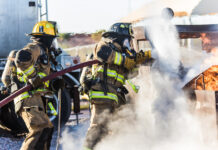During rescue operations, debris removal is a critical task that enables the extraction of trapped individuals and ensures their safety. Whether caused by natural disasters, building collapses, or accidents, debris can pose significant challenges. In this blog post, we will explore effective techniques for debris removal in rescues, focusing on safety protocols and efficient extraction methods.
Importance of Debris Removal in Rescues
Debris removal plays a crucial role in rescue operations for the following reasons:
- Safety: Removing debris creates safe pathways for search and rescue teams to access victims. It minimizes the risk of further injury to both the trapped individuals and the rescuers.
- Time-sensitive: Timely debris removal is essential in situations where every second counts. It allows for swift extraction of trapped individuals, increasing their chances of survival, especially in cases of entrapment or severe injuries.
- Access and Visibility: Clearing debris improves accessibility to victims, enabling medical personnel to assess their condition and provide immediate care. It also enhances visibility, making it easier for responders to locate and communicate with trapped individuals.
- Structural Stability: Removing unstable debris reduces the risk of further collapse, ensuring the safety of both victims and rescue personnel during the operation.
Techniques for Debris Removal
Effective debris removal techniques combine careful planning, teamwork, and appropriate tools and equipment. Here are some commonly used techniques:
- Manual Clearing: In situations where debris is relatively small and manageable, manual clearing is often the first step. Rescuers use hand tools such as shovels, rakes, and saws to remove loose debris and create access points.
- Heavy Machinery: In cases of larger debris or extensive damage, heavy machinery such as excavators, cranes, or bulldozers may be used. These machines can lift and move heavy objects, clear larger debris piles, and create pathways for rescue teams.
- Cutting and Shearing: In situations where debris is entangled or intertwined, cutting and shearing techniques are employed. Tools such as hydraulic cutters, saws, and jaws of life are used to sever and remove obstacles, including metal, concrete, or tangled wreckage.
- Breaching and Breaking: In instances where walls, doors, or other structures must be breached to reach trapped individuals, techniques such as breaching and breaking are employed. Tools like sledgehammers, hydraulic breakers, and cutting torches are used to create openings without causing additional harm to victims.
- Crushing and Pulverizing: For compacted debris or collapsed structures, crushing and pulverizing techniques are employed. Specialized equipment such as hydraulic crushers or pulverizers can reduce large chunks of debris into smaller, more manageable pieces for removal.
- Shoring and Bracing: Shoring and bracing techniques are utilized to stabilize compromised structures during debris removal operations. Rescuers install temporary supports, such as wooden or metal beams, to prevent further collapse and ensure the safety of trapped individuals and response teams.
- Air Lifting: In situations where debris obstructs access to trapped victims, air lifting techniques may be employed. Airbags or pneumatic lifting systems are used to raise or displace large debris, creating spaces for extraction without causing additional harm.
Storage Yard: An Essential Link in the Rescue Chain
After successful debris removal, it’s important to consider the appropriate disposal and storage of this debris. In the context of rescue operations, the concept of a ‘Storage Yard’ comes into play. A storage yard is a designated area where removed debris is temporarily stored before its final disposal.
This storage yard plays a vital role in maintaining the operational efficiency and safety of the rescue site. It ensures the organized collection and storage of debris, which can further facilitate recycling or disposal efforts.
Moreover, a well-managed storage yard reduces the risk of secondary accidents caused by randomly piled debris, and helps in preserving the integrity of any potential evidence embedded in the debris for subsequent investigations.
Safety Considerations
While debris removal is crucial, it must be conducted with utmost care and attention to safety. Here are some key safety considerations:
- Personal Protective Equipment (PPE): Rescuers involved in debris removal must wear appropriate PPE, including helmets, goggles, gloves, and protective clothing, to safeguard against falling debris, sharp edges, and hazardous materials.
- Structural Assessment: Prior to debris removal, a thorough assessment of the structure’s stability is essential. Only trained professionals equipped with the necessary knowledge and tools should conduct this assessment to prevent further collapse or endangerment.
- Teamwork and Communication: Effective communication and coordination among rescue teams are vital during debris removal operations. Clear instructions, hand signals, and radio communication ensure the safety of all team members and facilitate efficient debris clearance.
Debris removal is a crucial aspect of rescue operations, enabling safe extrication of trapped individuals. By employing effective techniques, adhering to safety protocols, and working together as a team, rescuers can successfully remove debris and save lives. So, it is essential to continuously update and improve techniques for debris removal in rescues to ensure the safety of both victims and rescue personnel. Let us all strive towards making every rescue operation a success through proper debris removal techniques.





